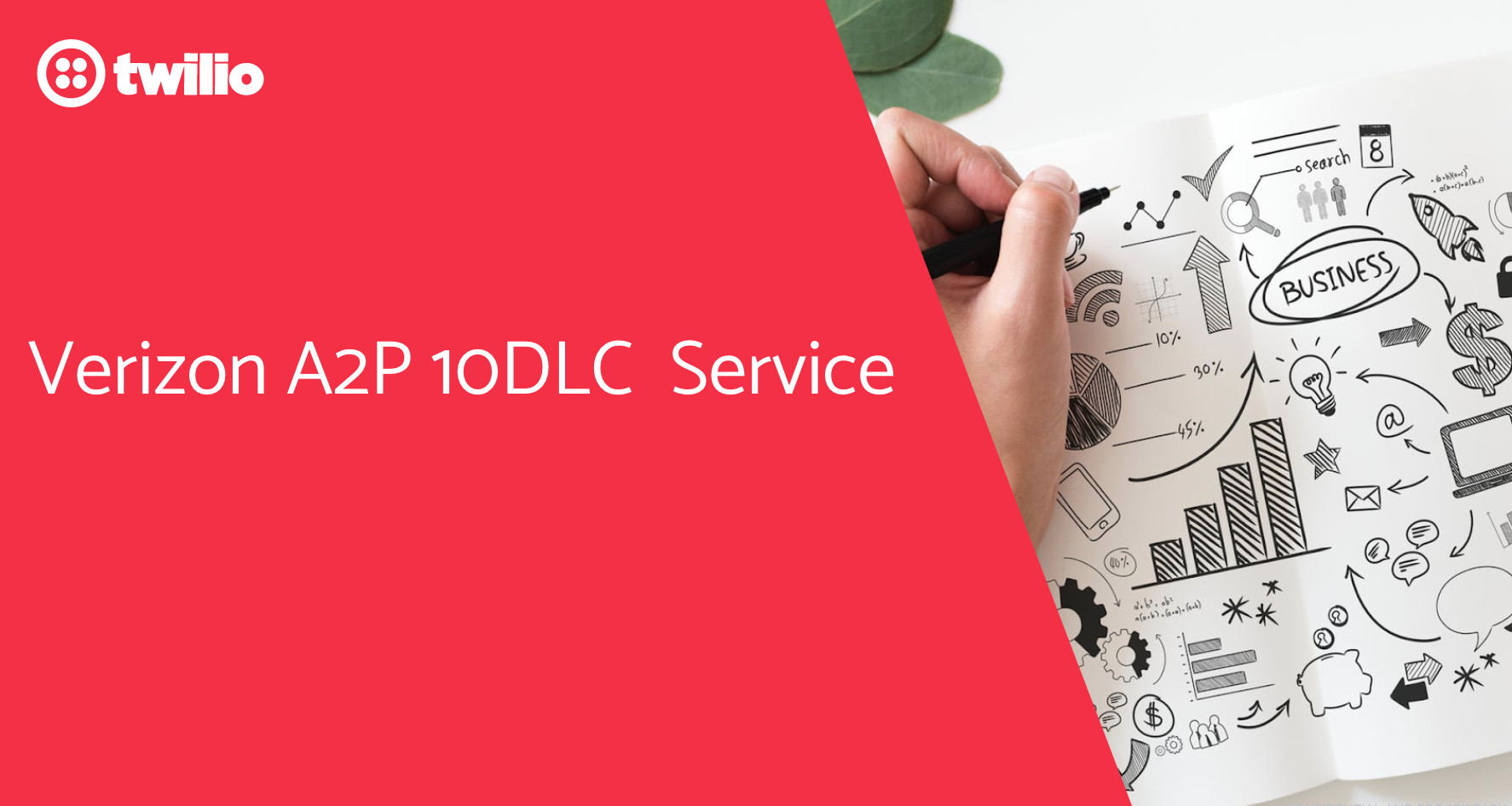What you should know about Verizon’s A2P 10DLC Service
Time to read:

[For the most up-to-date information on A2P 10DLC, check out "What is A2P 10DLC?"]
In January, Verizon took a major stride in their commitment to increasing deliverability and reliability of messaging by being the first carrier to launch their A2P 10-digit long code (10DLC) service for SMS & MMS. As application-to-person (A2P) messaging continues to increase year-over-year, projecting to hit 3.5 trillion messages by 2023, carriers are focused on protecting consumers while ensuring good actors have access to the resources they need to engage with customers. Let’s break down the A2P landscape to understand what brought us to where we are now, Verizon’s launch, and where we’re heading over the next five years.
A Brief History of A2P
First, let’s define it — A2P messaging is any kind of messaging that originates from an application. A2P messaging is business messaging (businesses messaging people). This includes, but is not limited to, marketing messages, appointment reminders, chat bots or virtual assistants, notifications, and one-time passwords.
In the early to mid-2000s, the US carriers solved the inter-carrier messaging problem, causing Peer-to-Peer (P2P) messaging over long codes to take off. However, there was no avenue for brands to utilize SMS messaging until 2006. In 2006, the carrier community and CTIA kickstarted A2P messaging by creating short codes to help brands communicate with their customers via SMS. While short codes are great for high volume messaging, they can be costly and aren’t always ideal for two-way interactions. To solve this problem, Twilio debuted its Programmable SMS API in 2010, giving companies the ability to send messages over long codes. Shortly after, in 2013, text-enabled toll-free numbers launched, providing businesses 10-digit capability over an 800-number. Brands now had three choices — short codes for high volume messaging, or toll-free or 10-digit long codes for lower volumes.
While brands and businesses could now connect with their customers over a ubiquitous channel, A2P traffic was mixed with P2P traffic, making it hard for the carriers to protect end users from unwanted messages.
Today, as more and more brands utilize SMS, we are seeing the movement to dedicated A2P 10DLC service, led by Verizon. This change protects good actors while filtering out the bad. For good actors, they can now use long code numbers to send links and other A2P style content. Bad actors are identified, marked as spammers, and prevented from accessing the network. Think about it as the carpool lane for A2P traffic only; the bad drivers are pulled over and taken off the road.
What is Verizon’s A2P 10DLC Service?
Verizon’s recent upgrade to the 10DLC service, designed specifically for A2P long code messaging, is an effort to help brands while protecting end users. Brands benefit from better stability and improved delivery quality, enabling new use cases that were previously impossible. They can send messages at scale, including links and calls to action without the worry they have today of being filtered by carriers. At the same time, consumers benefit because Verizon is able to more easily target abusive traffic, keeping those bad actors from spamming end users. By enabling brands and protecting customers, Verizon is playing a big part in maintaining SMS as a trusted channel.
What should you expect moving forward?
The A2P messaging market is projected to grow by $11B over the next 5 years. This continued expansion will be led by steady growth of SMS & MMS alongside new channels and global reach. SMS accounted for 83% of A2P traffic in 2019, but Operator IP messaging (next-generation messaging services like RCS) is projected to account for 12% of A2P traffic by 2024 while OTT messaging (Over-the-top messaging apps like WhatsApp and Facebook Messenger) is projected to account for 28% of A2P traffic.
At a global level, it’s important to note that A2P messages can be subject to local country regulations (e.g. France and India), impacting deliverability due to message filtering or delayed delivery. While Verizon is the first U.S. carrier to move SMS & MMS over to their 10DLC service, we expect a similar trend in nearly every country as demand continues to grow.
As the A2P ecosystem continues to evolve, Twilio is identifying trends and strengthening carrier relationships globally to help our customers deliver exceptional communication experiences for consumers. To be successful, companies need to meet their customers where they are today while setting themselves up for the communication regulations and channels of tomorrow.
Related Posts
Related Resources
Twilio Docs
From APIs to SDKs to sample apps
API reference documentation, SDKs, helper libraries, quickstarts, and tutorials for your language and platform.
Resource Center
The latest ebooks, industry reports, and webinars
Learn from customer engagement experts to improve your own communication.
Ahoy
Twilio's developer community hub
Best practices, code samples, and inspiration to build communications and digital engagement experiences.


